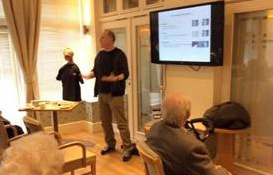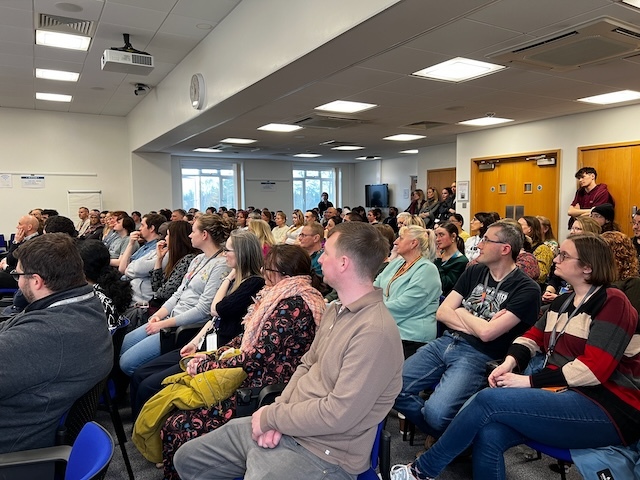On 14 January 2016, Dominic Norris visited Richmond Letcombe Regis Retirement Village to talk about his research on cilia.
Richmond village talk by Dominic Norris Dominic Norris visited Richmond Letcombe Regis Retirement Village to talk about his research on cilia On 14 January 2016, Dominic Norris visited Richmond Letcombe Regis Retirement Village to talk about his research on cilia. He began by taking them on a journey through the history of microscopy, getting them to think about the cell, and how we use microscopy to see its components. Most people think that the detail that can be seen through a microscope is determined by the magnification power, but it‘s actually more commonly the resolution – being able to distinguish two close together objects from one another. Dominic gave the example of a pair of headlights, which when far away can appear to be a single spot of light, but once they loom into view can be distinguished as two distinct lights. He spoke about how the invention of the electron microscope has given us the resolution required to see the components of a cell, including his own research interest – cilia. The next part of his talk went into what these cilia are, what they do and what happens when they don’t function properly. He showed video clips of tiny hair-like structures at the edge of the cell waving in unison. He used the example of cilia that brush dust and bacteria out of our lungs, and explained how one of the many reasons why they stop working can be due to diseases, such as Primary Ciliary Dyskinesia (PCD). At this point he began describing the symptoms of PCD, which are not only limited to trouble clearing the lungs, but also relate to the many other roles motile cilia play in the body. To explain one of the more drastic of these symptoms, he took out a Mannequin showing the internal arrangement of organs in a human body. This, he said, was how the body is normally arranged, pointing out how organs such as the heart have a set orientation, which allows them to fit in with the rest of the organs and function effectively. In some PCD patients, this is completely switched around to have a mirror image of the usual organ arrangement. He explained how, once again, this was due to malfunctioning cilia, this time during the early stages of development. These cilia swirl to create a flow that the embryo uses to determine which side of the body is left and which is right. Without this flow, organ arrangement goes awry. The talk was very well received by the residents, with a good level of engagement and plenty of questions, and we hope to arrange more events with them in the future.



